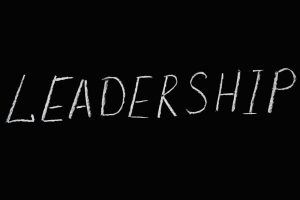
Imagine steering a ship across a vast ocean, only to realise that your crew, initially motivated and energised, starts losing focus as the destination feels endlessly far away. This scenario mirrors the challenge many leaders face when managing long-term projects. How do you keep your team engaged, motivated, and aligned when the finish line is months or even years away?
Could the secret to sustaining team momentum lie in reframing how progress is measured, celebrated, and communicated? What if you could transform your team’s perception of time and effort into a source of ongoing motivation?
Why Does This Matter?
For executives, entrepreneurs, and thought leaders, long-term projects are often the cornerstone of innovation and organisational growth. Yet, one of the most common pain points is the gradual decline in team morale and engagement over time. Deadlines stretch, priorities shift, and the initial excitement wanes. This disengagement can lead to missed deadlines, subpar results, or even project failure.
The ability to keep your team motivated during these marathon efforts is a critical leadership skill that determines the success of strategic initiatives.
Practical Solutions to Maintain Engagement
To keep teams focused and motivated over the long haul, leaders must create a culture that celebrates progress, fosters collaboration, and continuously reconnects the team to the project’s purpose.
Here’s how:
1. Break the Project into Manageable Milestones
- Why it works: Large projects often feel overwhelming. Breaking them down into smaller, achievable goals provides a sense of accomplishment along the way.
- How to do it: Set quarterly or monthly objectives and celebrate their completion with the same enthusiasm as achieving the final goal. Use visual project trackers to show progress and maintain transparency.
2. Reinforce the Project’s Purpose
- Why it works: People are more motivated when they understand how their work contributes to a greater mission.
- How to do it: Regularly remind your team of the “why” behind the project. Share stories, customer feedback, or metrics that highlight the impact their efforts are making.
3. Create Opportunities for Recognition and Reward
- Why it works: Recognition boosts morale and keeps teams motivated, even during challenging phases.
- How to do it: Implement peer-nominated awards, surprise appreciation days, or shoutouts in team meetings to spotlight individual contributions.
4. Encourage Autonomy and Ownership
- Why it works: Engaged teams feel empowered. Allowing team members to take ownership of specific aspects of the project can reignite enthusiasm.
- How to do it: Assign leaders for sub-tasks, and let them make decisions within their scope. Trust breeds accountability and commitment.
5. Maintain Open Communication
- Why it works: Lack of clarity can lead to frustration and disengagement. Transparent communication builds trust and helps teams navigate setbacks effectively.
- How to do it: Schedule regular check-ins to discuss progress, challenges, and adjustments. Use these opportunities to solicit feedback and ensure alignment.
6. Inject Variety into the Workflow
- Why it works: Repetitive tasks can lead to boredom. Introducing variety keeps the team stimulated.
- How to do it: Rotate roles, encourage skill-sharing sessions, or explore new tools to accomplish tasks more efficiently.
7. Invest in Team Development
- Why it works: When teams feel they are growing alongside the project, their engagement deepens.
- How to do it: Provide training sessions, workshops, or opportunities to learn skills that align with the project’s demands.




 In 2014, I had the privilege of working alongside Dr. Greg Skulmoski at Cleveland Clinic Abu Dhabi (CCAD). From the outset, Greg’s deep expertise in Project Management and his practical approach to handling complex projects stood out. His ability to combine technical knowledge with effective leadership left a lasting impression during our time working together.
In 2014, I had the privilege of working alongside Dr. Greg Skulmoski at Cleveland Clinic Abu Dhabi (CCAD). From the outset, Greg’s deep expertise in Project Management and his practical approach to handling complex projects stood out. His ability to combine technical knowledge with effective leadership left a lasting impression during our time working together. Stakeholder management has experienced a significant transformation. Gone are the days when quarterly meetings and monthly email updates sufficed. Today, Project Management Offices (PMOs) must navigate the complexities of real-time communication, engage stakeholders across various digital platforms, and foster relationships in a world where information flows constantly.
Stakeholder management has experienced a significant transformation. Gone are the days when quarterly meetings and monthly email updates sufficed. Today, Project Management Offices (PMOs) must navigate the complexities of real-time communication, engage stakeholders across various digital platforms, and foster relationships in a world where information flows constantly. In a high-pressure tech environment, where innovation and speed are key, a one-size-fits-all approach to problem-solving simply won’t work. The real magic happens when you harness the diverse problem-solving styles that exist within your team, using them to tackle challenges from multiple angles. Yet, many organizations fail to recognize this potential, leading to missed opportunities and stifled creativity. So, how do you make sure you’re getting the best out of your team?
In a high-pressure tech environment, where innovation and speed are key, a one-size-fits-all approach to problem-solving simply won’t work. The real magic happens when you harness the diverse problem-solving styles that exist within your team, using them to tackle challenges from multiple angles. Yet, many organizations fail to recognize this potential, leading to missed opportunities and stifled creativity. So, how do you make sure you’re getting the best out of your team? Every successful team, whether on the pitch or in the boardroom, has a playbook, a strategic guide that keeps everyone aligned and moving towards victory. Yet, when it comes to IT Programs and PMOs (Project Management Offices), many organisations still operate without a cohesive plan, risking inefficiency, miscommunication, and project failure. If you think your team is performing reasonably well right now. Imagine what your IT department could achieve with a well-crafted playbook that not only guides project execution but empowers your team to deliver results on time, every time.
Every successful team, whether on the pitch or in the boardroom, has a playbook, a strategic guide that keeps everyone aligned and moving towards victory. Yet, when it comes to IT Programs and PMOs (Project Management Offices), many organisations still operate without a cohesive plan, risking inefficiency, miscommunication, and project failure. If you think your team is performing reasonably well right now. Imagine what your IT department could achieve with a well-crafted playbook that not only guides project execution but empowers your team to deliver results on time, every time. Managing a remote team presents unique challenges, from ensuring clear communication to maintaining team cohesion across dispersed locations. However, when handled effectively, remote work can offer flexibility and productivity advantages. This guide focuses on key strategies to manage your remote team successfully while also making considerations for hybrid situations.
Managing a remote team presents unique challenges, from ensuring clear communication to maintaining team cohesion across dispersed locations. However, when handled effectively, remote work can offer flexibility and productivity advantages. This guide focuses on key strategies to manage your remote team successfully while also making considerations for hybrid situations. Leadership is the bedrock of organizational success. Great leaders inspire, motivate, and guide their teams towards shared goals. But what truly defines a successful leader, and how can you incorporate impactful leadership strategies into your organization? In this article we delve into the core insights and actionable strategies that can elevate your leadership effectiveness.
Leadership is the bedrock of organizational success. Great leaders inspire, motivate, and guide their teams towards shared goals. But what truly defines a successful leader, and how can you incorporate impactful leadership strategies into your organization? In this article we delve into the core insights and actionable strategies that can elevate your leadership effectiveness.